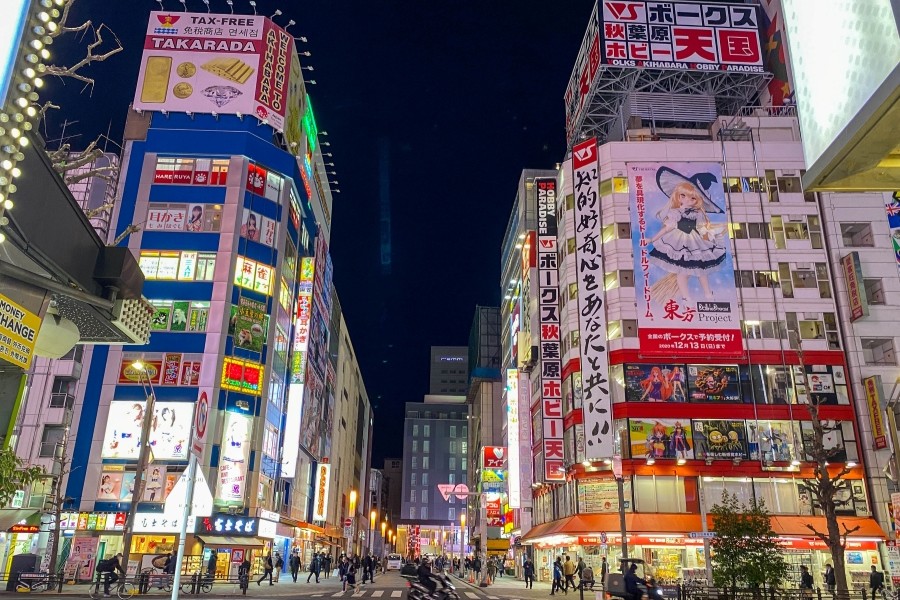From Electric Town to Maid Town – How Akihabara Transformed

Akihabara, often called Akiba by locals, has been one of Tokyo’s most iconic districts for decades. But while today it’s famous worldwide for its maid cafes and anime culture, it wasn’t always like this. The area’s transformation from a hub of electronics to a paradise for otaku culture is a fascinating story of post-war history, pop culture, and tourism.
Akihabara’s Origins: The Electric Town Era
After World War II, Akihabara became the go-to place for radio parts and electronic components. The black markets that sprang up in the area attracted tech enthusiasts, hobbyists, and engineers. By the 1950s and 60s, Akihabara was packed with small shops selling TVs, cassette players, and home appliances, earning it the nickname “Electric Town”.
As Japan’s electronics industry boomed, Akihabara became a symbol of cutting-edge technology. Even large retailers like Yodobashi Camera opened massive stores, reinforcing its identity as the heart of Japan’s gadget culture.
The Rise of Otaku Culture
By the 1980s and 90s, a cultural shift began. While electronics were still important, manga, anime, and video games were exploding in popularity. Specialty shops catering to fans of these hobbies started appearing alongside electronics stores.
The release of iconic franchises like Dragon Ball, Sailor Moon, and Neon Genesis Evangelion drew passionate fans to Akihabara, where they could buy limited-edition merchandise, rare figures, and second-hand collectibles. Slowly, the focus moved from home appliances to otaku-oriented products.
The Birth of Maid Cafes
In 2001, the very first maid cafe—Cure Maid Cafe—opened its doors in Akihabara. Waitresses dressed in French maid costumes served tea and sweets, greeting customers with phrases like “Welcome home, Master!” (Okaerinasaimase, goshujin-sama!).
The concept was quirky, playful, and deeply tied to anime aesthetics. Tourists, otaku, and curious locals flocked to these cafes, and soon dozens more opened. Each cafe developed its own style—some were elegant, others playful or themed after specific anime genres.
Akihabara Today: A Global “Maid Town”
Now, maid cafes are one of the main tourist attractions in Akihabara. While you can still find electronics, the area is better known for:
- Maid cafes and themed restaurants
- Anime and manga shops like Animate and Mandarake
- Game arcades with retro and modern titles
- Pop-up events celebrating the latest anime releases
Akihabara has reinvented itself as a cultural hotspot for both domestic and international visitors. The blend of nostalgia for its Electric Town past and the vibrant, colorful energy of otaku culture gives the area its unique charm.
Why the Shift Happened
Several factors contributed to Akihabara’s transformation:
- Decline of small electronics shops due to online shopping and big-box retailers.
- Rising global interest in Japanese pop culture, fueled by anime exports.
- Tourism marketing that highlighted maid cafés and otaku experiences as “uniquely Japanese.”
This shift ensured Akihabara’s survival—not as a relic of the past, but as a living, evolving entertainment district.
Visiting Akihabara Today
For visitors, the best way to experience Akihabara is to explore both sides of its personality:
- Electric Town nostalgia: Check out vintage electronics stores and Radio Kaikan for retro gadgets.
- Maid Town fun: Visit a maid cafe for a truly Akihabara-style welcome.


